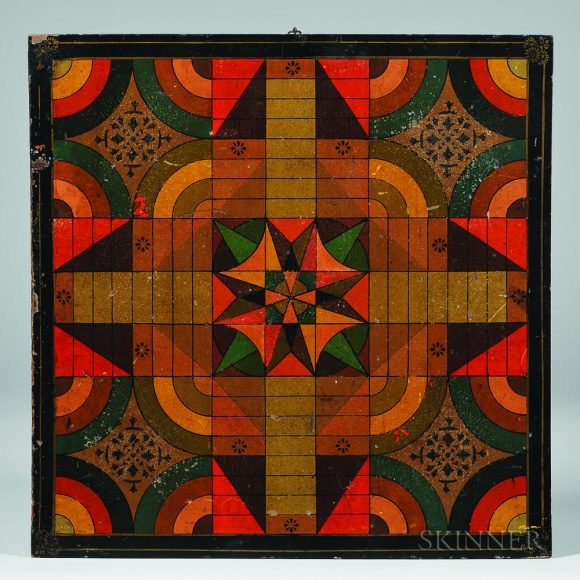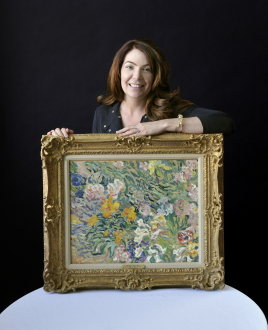Oh, the things we do for fun. There are games for every ability, age and interest, with new ones being invented all the time. The world of fun and games is ever-expanding, both in real life and online.
Poker, chess, bridge, checkers, baccarat, mah-jongg — the list is practically endless. There are games of pure chance, pursuits that demand pure strategy and everything in between. But the most popular pastimes the world over are board games — tabletop games that involve counters or tokens moved on a marked surface (the board) in accordance with a set of rules.
Board games have been around for thousands of years. Senet and backgammon were popular in Egypt and Mesopotamia 5,000 years ago. Chess and Pachisi (the American brand-name version is Parcheesi) were favorites in medieval India, while in ancient China the go-to board game was, well, Go.
We love board games first of all because they’re enjoyable and sociable. (For the most part. Apparently, the British royal family stopped playing Monopoly at their yuletide gathering as things got a tad competitive.) Some board games challenge our brains and offer a real mental workout. Others are purely escapist, entertaining and relaxing.
There is another aspect to the appeal of board games, though. That dimension is the desirability and collectability of antique and vintage game boards as folk art. Even people whose experience with the genre is a seemingly endless game of Monopoly, played on a long-ago, rainy afternoon, appreciate the visual effect of game boards.
Some of the most popular board games have been played in this country since colonial times. Many of the early settlers frowned on games that involved the use of dice or playing cards — “the devil’s pasteboards.” However, traditional favorites such as checkers (the English name is draughts), chess and backgammon continued to be popular and surviving boards are sought after.
The number of different games grew steadily as people gained more leisure time and faced fewer religious restrictions. Thus, board games can often reflect the social and political concerns of their times. In the 1840s, games frequently emphasized religious and moral ideas.
By the 1860s, capitalism and material success were the themes of many games like Game of the District Messenger Boy, or Merit Rewarded. Monopoly, the perennially popular financial game, came out in 1935 in the depths of the Great Depression.
The hot board games of 2019 also reflect contemporary popular culture and preoccupations. Espionage and shifting identities (Codenames); global disease control (Pandemic); adventurous travel (Ticket to Ride), and real estate speculation (Carcassonne) are the themes of some of today’s top sellers.
Many of the boards from the heyday of board games, the 1880s to the 1920s, are striking examples of commercial art. Mass production and the invention of chromolithography made colorful, inexpensive printed boards popular. Within a limited form and space — most boards are square in shape and less than 2 feet across — a lot of eye appeal could be created.
Particularly interesting are the unique examples created by do-it-yourself artists who expressed their whimsical side through unusual color combinations, fanciful decoration and, in some cases, patriotic or political imagery.
Some games offer a wide scope for creativity in graphic design. This is especially true of Parcheesi. The cross-and-circle layout of the board allows for multiple colors and creative variations in the geometric shapes. Another desirable game board variant is the “double-duty” board, designed for playing different games on the front and back. A frequent combination is Parcheesi on one side, checkers on the other.
The cribbage game board offers the greatest opportunities for imaginative shape and materials. The board holds the game pieces, pegs that keep track of the score. The play of the game itself involves cards.
One-of-a-kind cribbage boards display the artistry of the sailors, prisoners of war and Eskimos who used wood, walrus tusks and bone to carve miniature masterpieces of folk art. Particularly prized are scrimshaw examples with decoration depicting life in the age of sailing.
Great graphic design is timeless. Like other examples of folk art, such as pieced quilts, the color and geometry of game boards, especially handmade versions, foreshadow the effect and fascination found in many examples of 20th century abstract art. Displayed on the wall, eye-catching game boards are at home in any setting, from the strictly traditional to the minimalist modern and the robustly eclectic.
For more, contact Katie at kwhittle@skinnerinc.com or call 212-787-1114.


